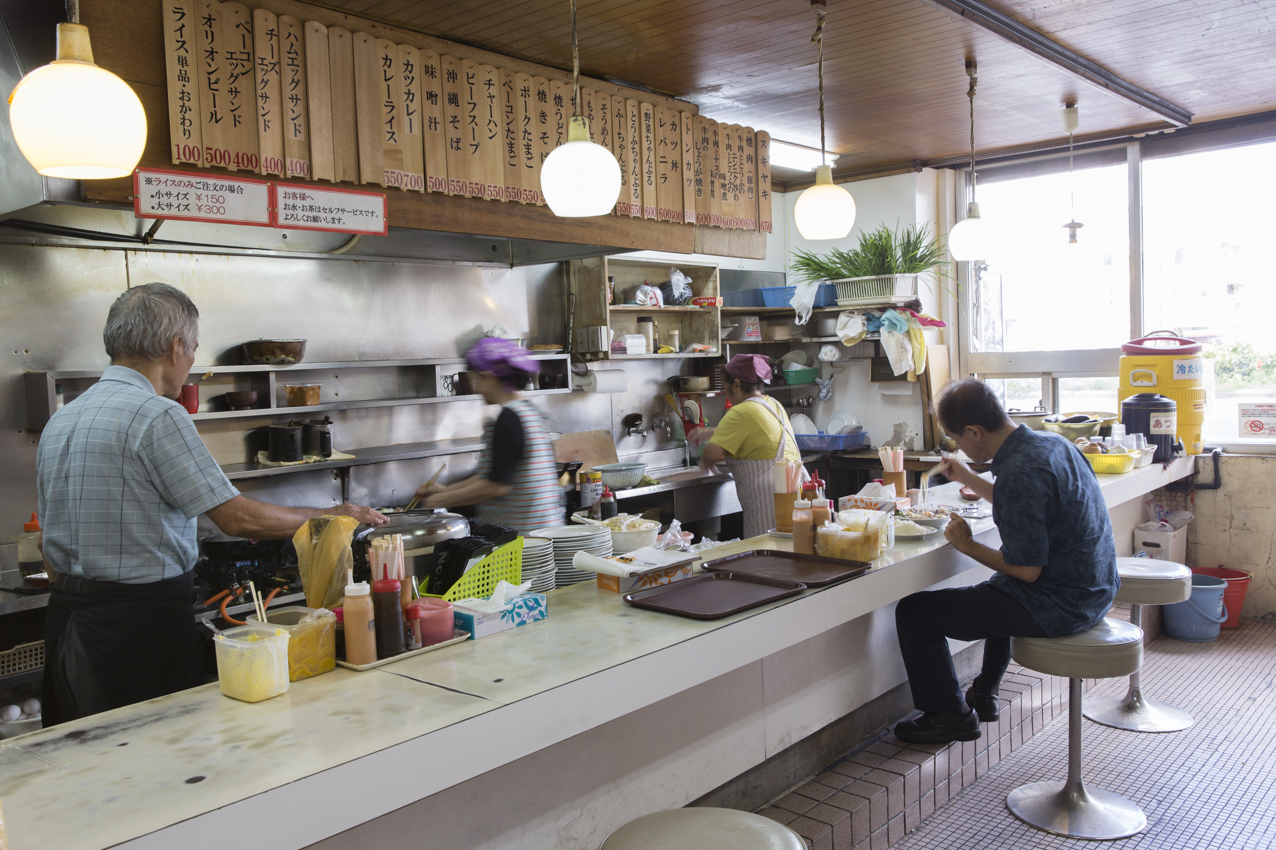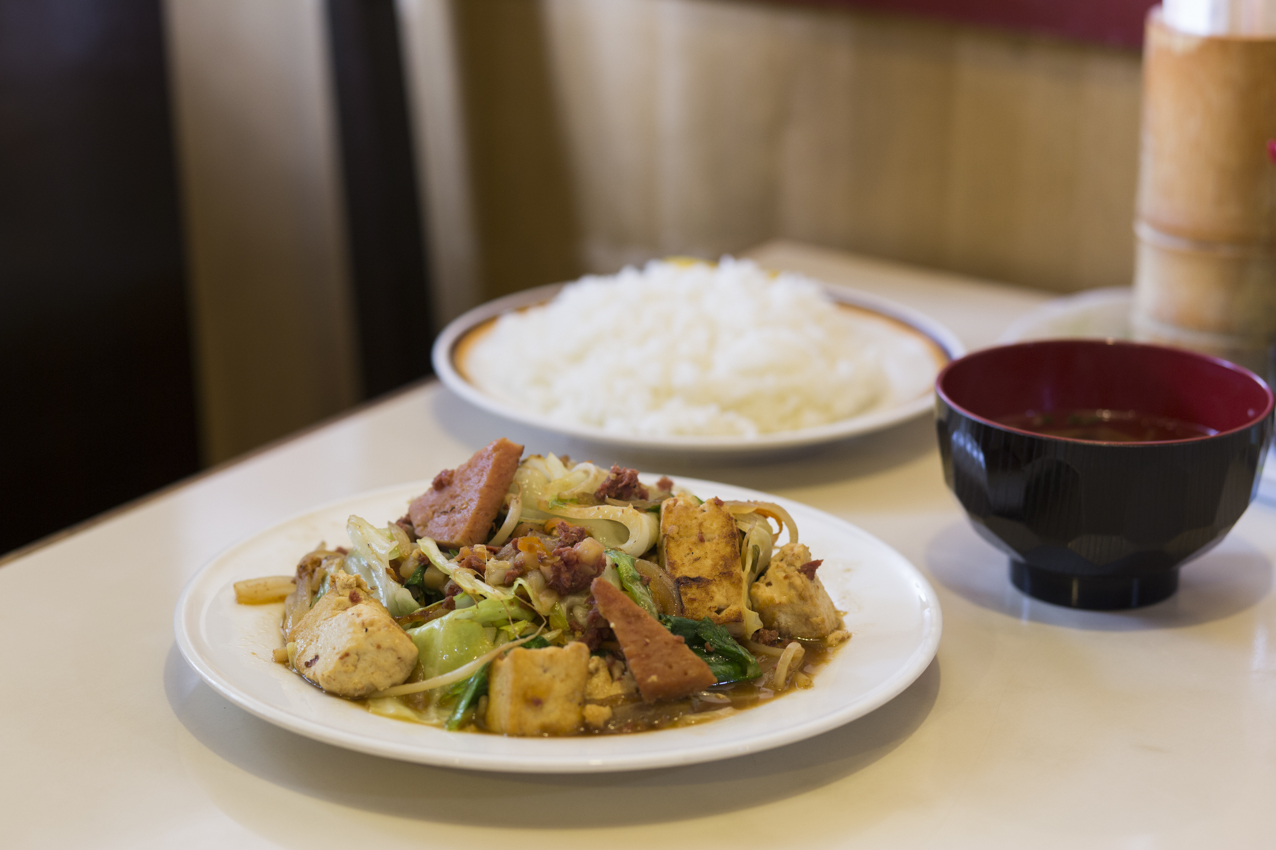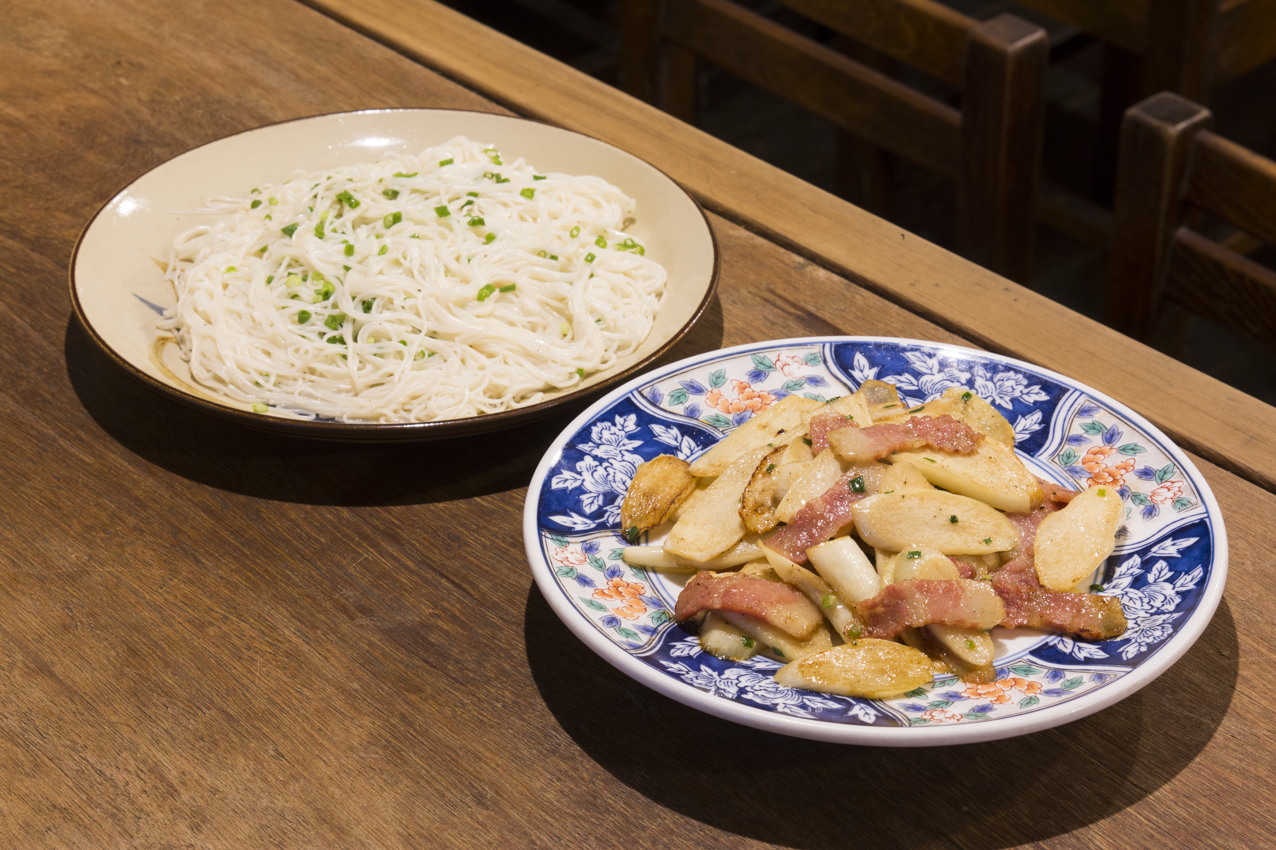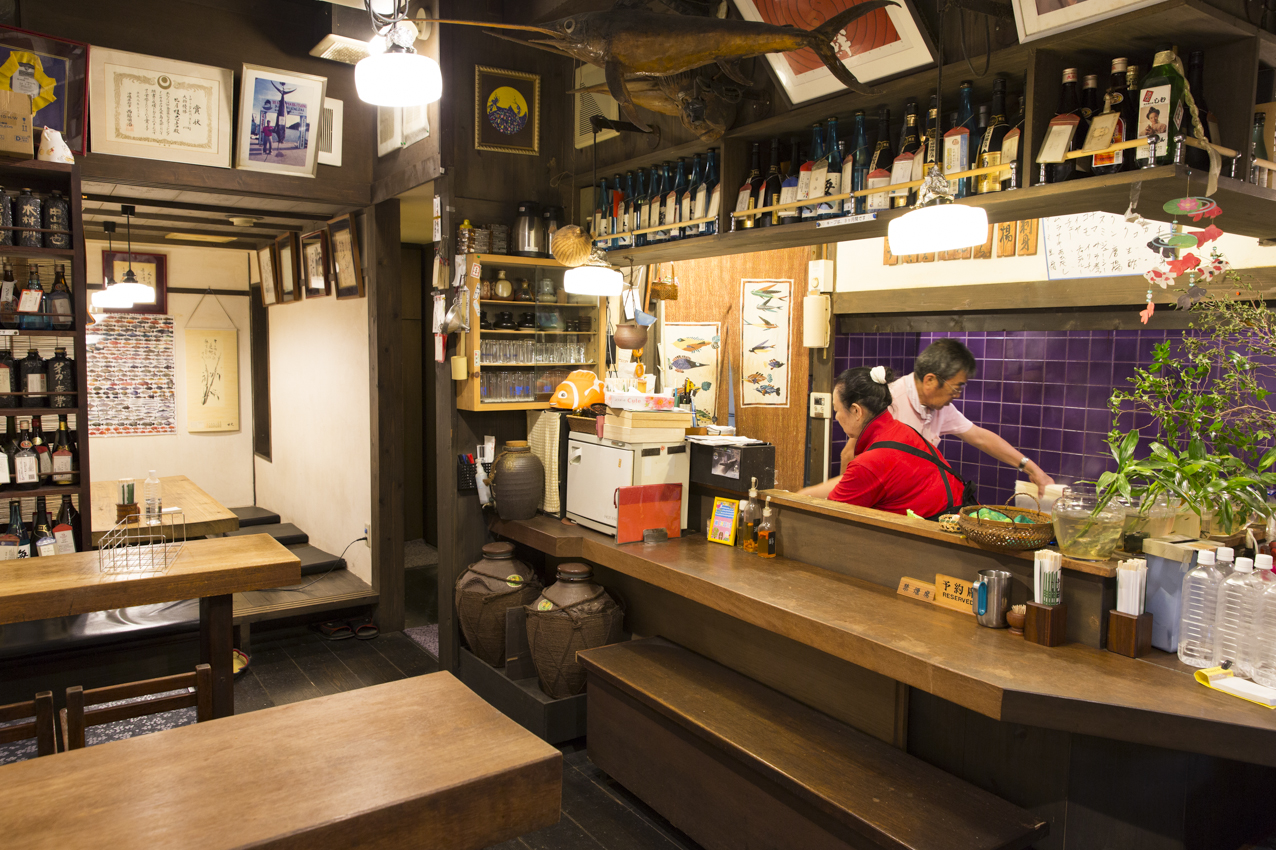TRAVELOGUE Okinawa
“Kusui-Nara-Chiku-Miso-ri” Spirit
- text : Masayuki Sesoko
- photo : camenoko studio Wataru Oshiro
- edit : nano.associates Seiji Takeuchi
chapter 2
Hefty Okinawa cuisine and innovative Ryukyu casual food
The first local diner I visited was Mikasa in Matsuyama, Naha City, the place located along Route 58, Okinawa’s main street. This is where you can enjoy what they call “Okinawa cuisine”, the mixture of Ryukyu gastronomy and western influence. The place has been filling the hungry stomachs of local people for more than 40 years, serving a wide variety of tofu dishes as its featured food. The highly-vintage doors welcome you at the entrance, and the interior is full of energy and excitement, so much so that you can feel the hot subtropical heat there. Behind the counters are several grandmas busily cooking then serving customers without pause. Some of the guests are local and some tourists. It’s a welcoming and laid-back place where everyone can enjoy being a part of the bustle. A notice on the table reads: “Water, tea and butter: self-service”. I ordered vegetable champuru (“mix”). It featured onion, carrot, bean sprout and lettuce – and tofu, of course, then pork and canned beef hash. Seasoned heavily with soy sauce, it made a perfect companion for white rice. Other menu lineups were Okinawa’s unique chanpon (a mixture of minced meat and onion with egg on rice), “pork egg”, vegetable/tofu champuru, sukiyaki (a form of hot pot), tonkatsu (fried pork cutlets) and curry with rice. It’s not only the dishes are campuru (“mixed up”), but the place’s ambience and the menu set-up too. You can feel the overflowing energy of Okinawans cheerfully surfing through the hot steamy days.
Then, I was off to the “Home cooking restaurant – Shimu” to experience Ryukyu cuisine.
“From when I was very little, if we have any reason to celebrate, the whole extended family got together and cooked the whole meal at home. Even as a child, you help the process so your body remembers how to cook them and what they taste like,” says Ms. Rumiko Kishimoto, who has been running the restaurant for the last 33 years. The famous stir-fry of Okinawa is chanpuru, but it is not something that has “everything mixed chaotically” as the name’s literal meaning suggests. The word “chanpuru” in the culinary context refers to “a stir-fried dish with tofu in it”. On the other hand, if you lightly stir-fry one ingredient solely, the dish is called tashiyah. This time, I was served soh-min tashiyah. Thin wheat noodles are first boiled, then lightly stirred with very simple flavoring using katsuo dashi (bonito broth), a pinch of salt and a little bit of soy sauce. To garnish, shredded leak is sprinkled on top. It is a very simple dish, but the flavor is something that exceeds its apparent simplicity, both very rich and very deep.
Ryukyu cuisine casual dishes, those cooked by ordinary people, are very cleverly made using a limited variety of ingredients whilst remaining very nutritious. Even if you study them with modern knowledge and science, you would say they make perfect sense as well as being very beautifully and cleverly designed. One example would be sohki hone no otsuyu (pork rib soup). There are only three ingredients in the dish; sohki (pork rib), konbu (kelp) and radish if it’s winter or winter melon if it’s summer. This makes the dish nutritiously well-balanced. The meat gives protein, the kelp minerals, and the vegetables various vitamins. In addition, the meat and kelp give out umami (a pleasant savory taste created by inosinic acid and glutamic acid). This makes the dish “aji ku-tah”, a unique term to Okinawa expressing that the food is not just rich and strong in flavor, but it’s full of umami, koku (depth) and taste. That’s the secret of the dish, being very delicious.
[offer, num=3]




